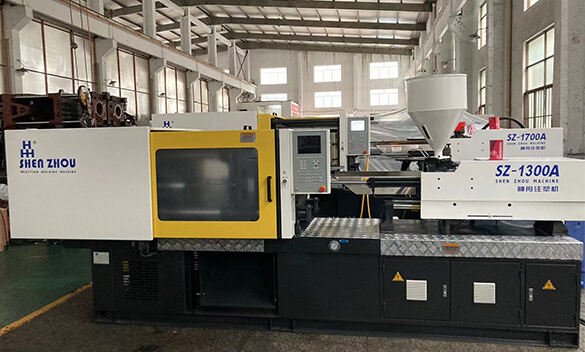Invented in the late 19th century, the injection molding machine revolutionized manufacturing by making it easier to produce consistent and complex plastic parts. Today, these machines are the backbone of many industries ranging from automotive to consumer electronics. Regular maintenance of an injection molding machine is vital to ensuring its longevity, efficiency, and quality output.Maintaining an injection molding machine involves routine inspections, cleaning, and adherence to manufacturer guidelines. By performing these tasks consistently, you can minimize downtime and extend the lifespan of the machinery.
1. Routine InspectionsOne of the first steps in maintaining an injection molding machine is to perform regular inspections. These inspections should encompass various parts of the machine, including the heating elements, hydraulic systems, and electrical components.· Visual and Thermal Inspections: Regular visual checks can help identify wear and tear early. Thermal imaging can also be useful to reveal hot spots and inconsistencies in temperature distribution.· Hydraulic System Checks: Routine checks of hydraulic fluid levels and quality are important. Over time, hydraulic fluids can become contaminated and lose efficacy, affecting the machine's performance.· Electrical System Inspections: Ensure that all electrical connections are secure and free of corrosion. Regularly test the machine's electrical systems to preempt any power-related failures.By catching issues early through routine inspections, you save time and money by avoiding unexpected breakdowns.
2. Lubrication and CleaningLubricating moving parts and cleaning critical components is essential for the optimal functioning of an injection molding machine.· Lubrication: Apply appropriate lubricants to moving parts such as gears, bolts, and sliders. This reduces friction, wear, and prevents overheating. Always use manufacturer-recommended lubricants to avoid unwanted chemical reactions.· Cleaning: Clean critical machine parts, particularly the mold cavities and nozzles, to remove any built-up residue or debris. This is vital for maintaining the quality of molded parts and preventing defects.These routine tasks can significantly improve the machine's efficiency and reduce the chances of corrosion and other wear-related issues.
3. Calibration and AdjustmentProper calibration ensures that the machine produces parts that meet specified dimensions and tolerances. Failure to calibrate can result in defective products and material wastage.· Check Calibration: Regularly calibrate the machine's injection parameters such as temperature, pressure, and injection speed. Use gauges and calibration tools to align these parameters accurately.· Adjust Settings: Make periodic adjustments to the machine settings based on the material being used and the product specifications. Always document these changes for future reference.Calibration and adjustments should be performed by trained personnel to guarantee accuracy.
4. Monitoring and AutomationLeveraging advanced monitoring tools and automation can significantly improve the efficiency and reliability of an injection molding machine.· SCADA Systems: Supervisory Control and Data Acquisition (SCADA) systems can provide real-time monitoring, alerting operators to potential issues before they cause major problems. These systems can track parameters such as temperature, pressure, and machine cycles.· Predictive Maintenance Software: Use predictive maintenance software that utilizes machine learning algorithms to forecast potential failures. This enables you to schedule maintenance activities proactively.Monitoring and automation provide an added layer of security and efficiency, making maintenance less labor-intensive.
5. Training and DocumentationInvesting in the proper training of machine operators and maintaining thorough documentation can go a long way in ensuring the longevity of an injection molding machine.· Operator Training: Regular training sessions for machine operators are crucial. They should be well-versed in routine maintenance tasks, troubleshooting, and the operation of monitoring tools.· Documentation: Thorough documentation of all maintenance activities, inspections, and repairs is critical. This record-keeping assists in identifying recurring issues and improving maintenance procedures over time.Comprehensive training and meticulous documentation not only help in maintaining the machine but also in optimizing the entire manufacturing process.Regular maintenance checks, lubrication, calibration, monitoring, and proper training are key to sustaining the performance of an injection molding machine. By adhering to these guidelines, you can ensure the machine operates efficiently, thereby reducing downtime and increasing productivity.ConclusionMaintaining an injection molding machine is not just about fixing issues as they arise but rather about implementing a proactive approach to care and upkeep. Regular inspections, proper lubrication, precise calibration, advanced monitoring, and comprehensive operator training are essential practices. By maintaining these routines, manufacturers can ensure that their injection molding machines operate at peak performance, thereby extending their lifespan and ensuring consistent product quality.
FAQ
1. How often should an injection molding machine be inspected?
It is recommended to perform routine inspections every three to six months.
2. What type of lubricant should be used on an injection molding machine?
Always use manufacturer-recommended lubricants to ensure compatibility and effectiveness.
3. Can predictive maintenance software be used on older injection molding machines?
Yes, most predictive maintenance software can be integrated with older machines using sensors and adapters.
4. What is the most common issue found during the maintenance of injection molding machines?
Hydraulic system issues, such as fluid contamination or leaks, are among the most common problems.
5. Why is documentation important in machine maintenance?
Documentation helps track maintenance activities, identify recurring problems, and improve overall maintenance strategies.By following the comprehensive steps outlined above, manufacturers can significantly enhance the performance and reliability of their injection molding machines, ensuring a smooth and productive manufacturing process.



